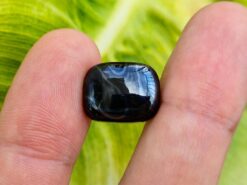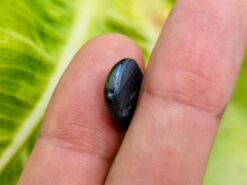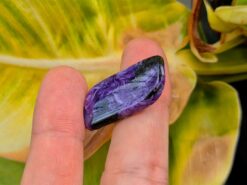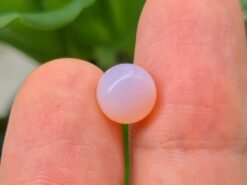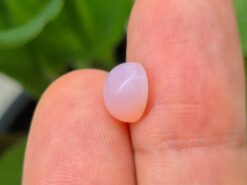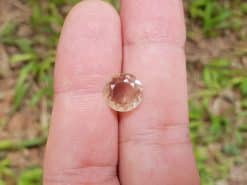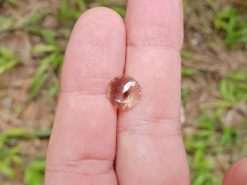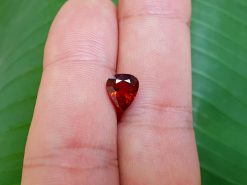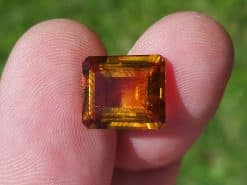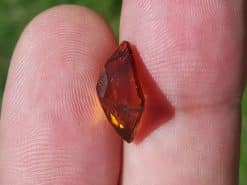Forsterite
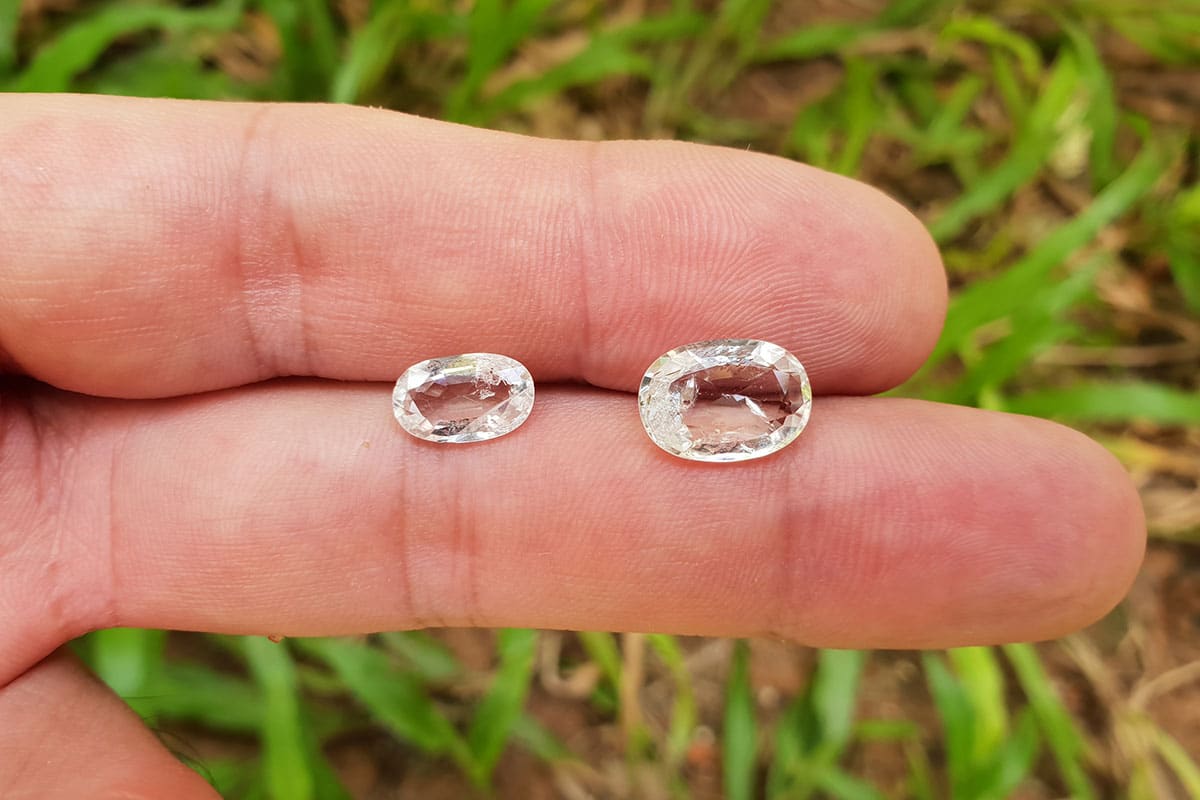
Buy natural gemstones in our shop
Forsterite mineral
It is the magnesium rich end-member of the olivine solid solution series. It is isomorphous with the iron-rich end-member, fayalite crystallized in the orthorhombic system.
We always found forsterite is association with igneous and metamorphic rocks. And we also found it in meteorites. In 2005 it was also found in cometary dust returned by the Stardust probe. In 2011 it was observed as tiny crystals in the dusty clouds of gas around a forming star.
There is two polymorphs of this stone. Wadsleyite, orthorhombic, and also ringwoodite, isometric. Both mainly comes from meteorites.
Pure crystal is magnesium, also oxygen and silicon. The chemical formula is Mg2SiO4. Forsterite, fayalite Fe2SiO4 and tephroite Mn2SiO4 are the end-members of the olivine solid solution series. Other elements such as Ni and Ca substitute for Fe and Mg in olivine. But only in minor proportions in natural occurrences.
Other minerals such as monticellite CaMgSiO4. An uncommon calcium-rich mineral, share the olivine structure. But there is a small quantities of solid solution between olivine and these other minerals. We can found monticellite in contact of metamorphosed dolomites.
Forsterite composition: Mg2SiO4
The chemical composition is mainly anion SiO44- and cation Mg2+ in a molar ratio 1:2. Silicon is the central atom in the SiO44− anion. A single covalent bond binds each oxygen atom to the silicon. The four oxygen atoms have a partial negative charge.
Because of the covalent bond with silicon. Therefore, oxygen atoms need to stay far from each other. In order to reduce the repulsive force between them. The best geometry to reduce the repulsion is a tetrahedral shape.
It was first described in 1824 for an occurrence at Mte. Somma, Vesuvius, Italy. Its name comes from the English naturalist and mineral collector Adolarius Jacob Forster.
The stone is being currently studied as a potential biomaterial for implants. Due to its superior mechanical properties.
Gemological properties
- Category: Nesosilicates
- Formula: Magnesium silicate (Mg2SiO4)
- Crystal system: Orthorhombic
- Crystal class: Dipyramidal
- Color: Colorless, green, yellow, yellow green, white
- Crystal habit: Dipyramidal prisms often tabular, commonly granular or compact massive
- Twinning: On {100}, {011} and {012}
- Cleavage: Perfect on {010} imperfect on {100}
- Fracture: Conchoidal
- Mohs scale hardness: 7
- Luster: Vitreous
- Streak: White
- Diaphaneity: Transparent to translucent
- Specific gravity: 3.21 – 3.33
- Optical properties: Biaxial (+)
- Refractive index: nα = 1.636 – 1.730 nβ = 1.650 – 1.739 nγ = 1.669 – 1.772
- Birefringence: δ = 0.033 – 0.042
- 2V angle: 82°
- Melting point: 1890 °C
forsterite meaning and healing metaphysical properties benefits
The following section is pseudo scientific and based on cultural beliefs.
The crystal has the meaning and properties of healing past wounds. It is a gemstone that has a strong healing energy. It will put an end to the pain that continues from the past. It also gives you the strength to stand up to the future.
FAQ
What is forsterite uses?
As gemstones, industrial uses as refractory sands and abrasives, an ore of magnesium and as mineral specimens. The crystal is named for the German naturalist, Johann Forster. It is one of two minerals that are simply known as olivine. The other mineral is fayalite.
What is difference with fayalite?
Fayalite is the iron rich member with a pure formula of Fe2SiO4. Forsterite is the magnesium rich member with a pure formula of Mg2SiO4. Otherwise they are difficult to distinguish and virtually all specimens of the two minerals contain both iron and magnesium.
Where does forsterite occur?
The stone is common in dunite, gabbros, diabase, basalts, and trachytes. Small amounts of fayalite are present in many volcanic rocks in which sodium is more common than potassium. The minerals also occur in dolomitic limestones, marbles, and metamorphosed iron-rich sediments.
How do you calculate the forsterite olivine content?
Plot of olivine forsterite content (Fo = 100*Mg/(Mg+Fe total ), cation proportions ) versus the number of Ca cations (mineral formula based on four oxygen).

